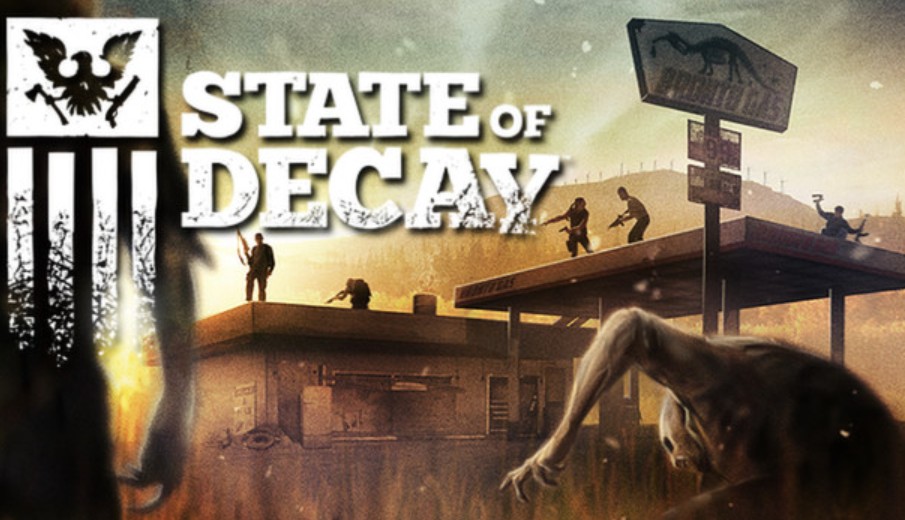This is a gripping third-person survival game where players are tasked with leading a community of survivors in the aftermath of a zombie outbreak.
Developed by Undead Labs and published by Microsoft Studios, the game offers a rich open-world experience that focuses not only on combat and exploration, but also on base building, resource management, and community survival.
With its unique focus on strategic decisions and emergent storytelling, State of Decay provides a refreshingly different approach to the zombie genre that encourages smart planning and emotional investment in every survivor.
File size
Development and Release of State of Decay
State of Decay was initially launched on June 5, 2013, for Xbox 360 and later made its way to PC. It marked Undead Labs’ debut and was widely praised for its innovative blend of real-time action and community simulation.
The success of the original title led to the release of State of Decay: Year-One Survival Edition, featuring upgraded visuals and additional content. This re-release further expanded the fanbase and laid the groundwork for the highly anticipated sequel, State of Decay 2.
Furthermore, fans of methodical survival experiences will also enjoy ARK: Survival Evolved, which offers a similarly deep simulation of zombie apocalypse life.
Storyline and Setting of Game
Set in the fictional Trumbull Valley, State of Decay throws players into a rural region overrun by the undead. Instead of following a single character’s journey, the game lets players assume control of multiple survivors as they build and manage a safe haven amid chaos.
The story unfolds through character interactions, radio messages, and personal quests. It’s less about a central narrative and more about the dynamic experiences that emerge from your actions—every decision can lead to the survival or demise of your group.
The rural setting, dotted with small towns, forests, and abandoned buildings, enhances the feeling of isolation and danger, adding to the atmosphere of tension and unpredictability.
Game Modes in State of Decay
State of Decay offers several distinct gameplay modes:
- Story Mode (Main Campaign): Follow the progression of a small group of survivors as they establish a base, gather supplies, and fend off both zombies and human threats.
- Breakdown (Sandbox Mode): An endless survival experience where players manage increasingly difficult survivor situations across multiple levels.
- Lifeline (Military Perspective): A unique campaign that puts you in control of a military unit tasked with rescuing key personnel from a crumbling city.
Gameplay Mechanics in State of Decay
The gameplay in State of Decay is built around survival, community management, and decision-making:
- Base Building and Management: Choose a home site, fortify it, and build facilities like gardens, watchtowers, and medical stations. Base setup directly affects your community’s morale and safety.
- Permadeath and Survivor Switching: If a character dies, they’re gone for good. You can switch between survivors, each with unique traits and skills.
- Resource Management: Scavenge for food, ammo, medicine, and building materials. Supplies are limited, and every action affects long-term survival.
- Real-Time World Progression: Time advances even when you’re not playing. Resources deplete, and characters become tired or injured, adding urgency to your decisions.
Beginner Tips and Tricks
New to State of Decay? These tips can help you get started:
- Scout Before You Scavenge: Use the binocular feature from lookout points to identify resource-rich locations and threats before entering.
- Rotate Survivors: Avoid overusing a single character. Let them rest to avoid fatigue and injury.
- Build Wisely: Focus on essential facilities first—like a medical center and sleeping quarters—to maintain survivor health and morale.
Besides, loved the intense action in this game? Don’t stop there—Rust Game offers a world full of challenges and captivating gameplay that’s waiting for you.
- Stockpile Essentials: Medicine and food should be prioritized in the early game. Secure these regularly to avoid community collapse.
- Use Vehicles Cautiously: Cars are valuable for transport and zombie elimination, but they can get damaged easily. Save them for urgent tasks or large loot hauls.
Important Features of State of Decay Game
Below are some defining features that make State of Decay such a compelling and immersive survival experience:
1) Community Management
Rather than focusing on just one hero, you oversee a group of survivors, each with distinct personalities, skills, and needs. Managing relationships, settling disputes, and ensuring everyone’s morale creates a realistic social dynamic.
This layer of responsibility transforms the game into more than just a zombie shooter—it becomes a community survival simulator. Every choice you make affects the entire group.
2) Realistic Survival Systems
Survival in this game isn’t just about killing zombies—it’s about smart planning and resource management. You’ll need to scavenge for food, medicine, ammo, and materials while managing fatigue and injuries.
Crafting tools and maintaining base facilities become daily necessities. The scarcity of supplies forces players to constantly make difficult, meaningful decisions.
3) Procedural Events and Storylines
Each playthrough brings something new, thanks to randomly generated survivor traits, dynamic events, and spontaneous challenges.
Whether it’s a raid, illness, or unexpected rescue call, the unpredictability keeps gameplay engaging. These procedural elements ensure that no two stories unfold the same way, enhancing replayability.
4) Permadeath Mechanic
Death in State of Decay is permanent, making every moment tense and strategic. When a survivor dies, their loss is felt not just emotionally but also tactically, especially if they were a key fighter or medic.
This feature raises the stakes considerably and demands cautious decision-making in every encounter. Your community evolves based on who lives—and who doesn’t.
5) Expansive Open World
The game features a large, open rural environment filled with diverse locations to explore and secure. From remote cabins and farmlands to dense neighborhoods and fortified military outposts, each area offers unique risks and rewards.
Exploration is not only encouraged but essential, adding both variety and immersion to the survival loop.
Why State of Decay Stands Out
State of Decay stands out by combining real survival simulation with action-oriented gameplay. Its focus on community, consequence-driven decisions, and character development offers a deeper level of immersion than most games in the genre.
The emotional weight of losing a survivor, the satisfaction of building a thriving base, and the fear of every supply run make it an experience that sticks with you long after you put the controller down.
It’s not just about killing zombies—it’s about rebuilding hope in a world where hope feels lost.
Advanced Combat Techniques
When facing zombies and hostile survivors, mastering these techniques can ensure survival:
- Silent Takedowns: Use stealth to your advantage. Crouch-walk behind enemies and eliminate them quietly to avoid drawing attention.
- Distraction Tools: Use firecrackers or alarm clocks to lure zombies away from an area before scavenging.
- Combat Stamina Management: Don’t spam attacks. Time your swings and kicks carefully to avoid getting fatigued mid-fight.
- Weapon Durability Awareness: Weapons break over time. Always carry a backup and know when to retreat for repairs.
- Use Terrain: Fight in tight corridors or narrow alleys to limit zombie mobility and control engagements better.
System Requirements
To run State of Decay on PC, make sure your system meets these requirements:
- OS: Windows 7
- Processor: Intel Core 2 Duo / AMD Athlon 64 X2
- Memory: 4 GB RAM
- Graphics: NVIDIA GeForce 9600 GSO / ATI Radeon HD 2600 XT
- DirectX: Version 11
- Storage: 3 GB available space
State of Decay offers a unique survival horror experience where the fate of your community rests on your ability to lead, plan, and adapt. From stealthy supply runs to brutal zombie fights, the game challenges you to think beyond just your next kill—and focus on the bigger picture: survival.










